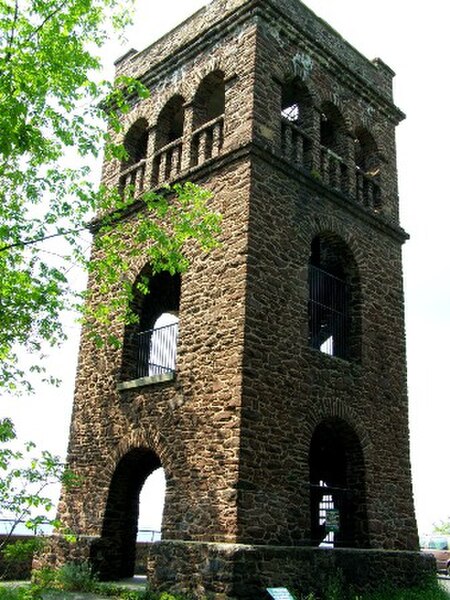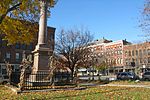Poet's Seat Tower
1912 establishments in MassachusettsBuildings and structures in Franklin County, MassachusettsGreenfield, MassachusettsMassachusetts building and structure stubsMonuments and memorials in Massachusetts ... and 3 more
Observation towers in the United StatesTowers completed in 1912Towers in Massachusetts

Poet's Seat Tower is a 1912 sandstone observation tower, located in Greenfield, Massachusetts. It was so named to honor a long tradition of poets being drawn to the spot, in particular, the local poet Frederick Goddard Tuckerman. By 1850, the location was referred to as "Poet's Seat" by Tuckerman in a surviving herbarium entry for November 10 of that year.An earlier wooden tower was erected at the site on June 3, 1879. This first structure was built, along with a public drinking fountain and a road accessing the site, under the auspices of The Greenfield Rural Club.
Excerpt from the Wikipedia article Poet's Seat Tower (License: CC BY-SA 3.0, Authors, Images).Poet's Seat Tower
Poets Seat Tower Road, Greenfield
Geographical coordinates (GPS) Address Website External links Nearby Places Show on map
Geographical coordinates (GPS)
| Latitude | Longitude |
|---|---|
| N 42.5946 ° | E -72.5865 ° |
Address
Poet's Seat Tower
Poets Seat Tower Road
01301 Greenfield
Massachusetts, United States
Open on Google Maps









